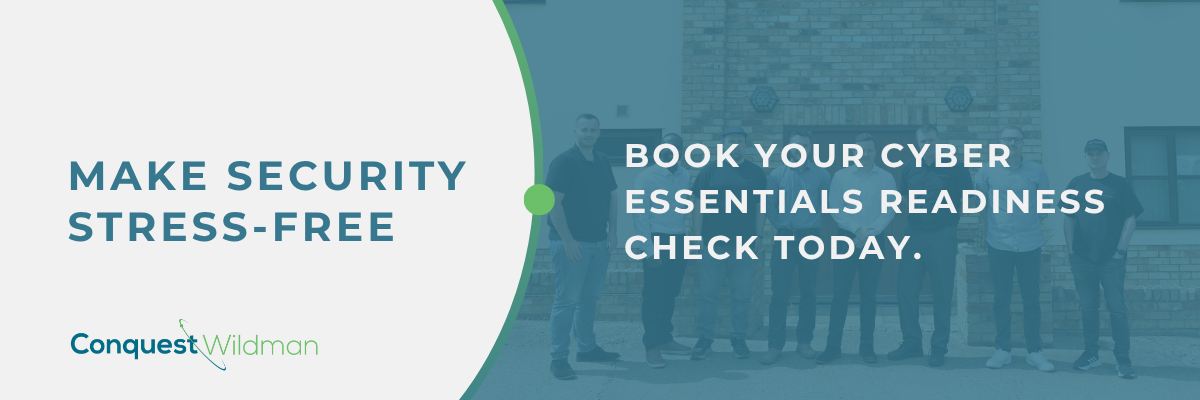How well do you really understand your organisation’s cyber security? For many business leaders, it’s a question that often goes unanswered until a security incident forces it to the forefront.
Understanding where your business stands is the first step towards effective risk management. By identifying vulnerabilities, tracking performance, and aligning with frameworks like Cyber Essentials, leaders can make informed decisions that strengthen resilience and support compliance.
In this guide, we’ll explore why visibility is vital, the common gaps that leave small and medium-sized enterprises (SMEs) exposed, and how structured reporting tools such as risk dashboards and maturity scores can help you manage and reduce cyber risk with confidence.
Why Knowing Your Cyber Security Posture Matters
Your cyber security posture is the complete picture of your organisation’s defences – policies, systems, processes, and behaviours that determine how well you can prevent and respond to cyber incidents.
Without understanding this, it’s difficult to gauge whether your business is genuinely secure or simply hoping for the best. For leadership teams, this awareness is critical for several reasons:
- Strategic decision-making: A clear understanding of risk helps leaders allocate resources effectively. For instance, it can highlight where to invest – whether in endpoint protection, staff training, or policy development.
- Compliance assurance: Many industries now expect organisations to demonstrate cyber security maturity as part of their contractual or regulatory obligations.
- Business continuity: A well-defined posture supports operational resilience. Knowing where weaknesses exist means issues can be addressed before they cause downtime, data loss, or reputational harm.
Common Visibility Gaps in SME Cyber Security
Despite increased awareness, many SMEs still lack the visibility needed to manage cyber risk effectively.
In fact, recent data reveals that ransomware attacks are rising, with costs increasing nearly 20% year-on-year in the UK. For SMEs who don’t have a comprehensive overview of their digital assets or the associated risks, this means a large portion of their IT environment could go unmonitored and unprotected.
Common causes of visibility gaps include:
- Untracked assets: As teams expand and adopt new tools, devices and accounts often get added informally, without being logged or secured.
- Disjointed systems: Security tools that don’t communicate with one another create data silos, obscuring the full risk picture.
- Shadow IT: Employees using unsanctioned apps or storage services can unintentionally introduce vulnerabilities.
- Outdated assumptions: Many leaders believe their IT provider “has it covered,” when in reality, basic areas like MFA enforcement or patch management may still be incomplete.
The Value of Structured Reporting
Understanding your risk begins with structured reporting – turning raw technical data into clear, actionable insights. Dashboards, maturity assessments, and risk reports simplify complex security information into something meaningful for decision-makers.
This approach adds value in several key areas:
- Compliance: Frameworks such as Cyber Essentials and ISO 27001 require measurable evidence of your controls. Risk reporting helps you track compliance readiness and demonstrate accountability to auditors and clients.
- Insurance: Cyber insurance providers increasingly demand proof of robust risk management. Having structured, up-to-date reports can support policy renewals, reduce premiums, and simplify claims. Providing inaccurate information means the money you’ve paid for your policy is basically null on day one.
- Operational efficiency: When risks are visualised clearly, teams can prioritise mitigation efforts – fixing what matters most first rather than chasing isolated issues.
- Strategic planning: Executives can align cyber security with broader business objectives, linking improvements to measurable outcomes like uptime, trust, and customer retention.
Best Practices for Monitoring and Improving Your Risk Score
Cyber risk evolves as technology, threats, and regulations change. Building resilience requires ongoing assessment and incremental improvement. But you can strengthen your cyber posture over time by:
- Establishing a baseline: Conduct an initial risk assessment to identify vulnerabilities and benchmark your current security level.
- Adopting a framework: Implementing Cyber Essentials provides a strong foundation, covering key controls such as secure configurations, access management, and patching.
- Monitoring continuously: Use tools that track your cyber health in real time – identifying emerging threats, weak passwords, or outdated systems.
- Reviewing quarterly: Update your maturity score and report progress to leadership, ensuring cyber security remains a standing agenda item.
- Training your team: Human error remains one of the leading causes of breaches. Regular awareness training helps staff recognise phishing attempts and follow best practices.
- Engaging in scenario testing: Tabletop exercises or simulated attacks test your response capabilities and identify process gaps.
Conquest Wildman’s Expertise in Cyber Security and Risk Management
At Conquest Wildman, we believe that managing cyber risk should be about building long-term resilience and expert IT support.
That’s why our expertise spans every layer of cyber security, including infrastructure protection, policy development to governance, risk assessment, and compliance alignment. Our approach helps business leaders:
- Gain real-time visibility into their cyber posture through the Cyber Risk Portal.
- Identify and address critical vulnerabilities before they escalate.
- Benchmark performance against industry standards such as Cyber Essentials.
- Make informed, evidence-based decisions about technology and investment.
Contact Us Today
Understanding your cyber risk isn’t just a technical challenge – it’s a strategic imperative.
By identifying visibility gaps, adopting structured reporting, and continuously improving your risk score, your business can demonstrate accountability, strengthen resilience, and gain the confidence to operate securely in an increasingly digital world.
To learn how your business can achieve Cyber Essentials effortlessly and gain clarity over your risk posture, contact us today.


